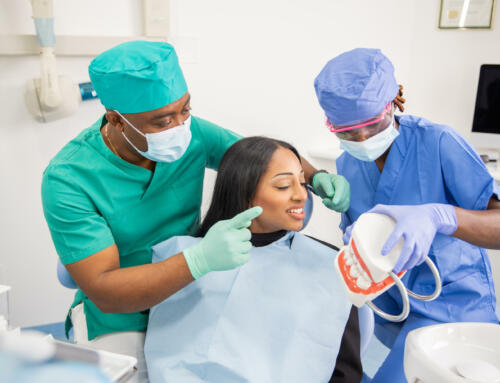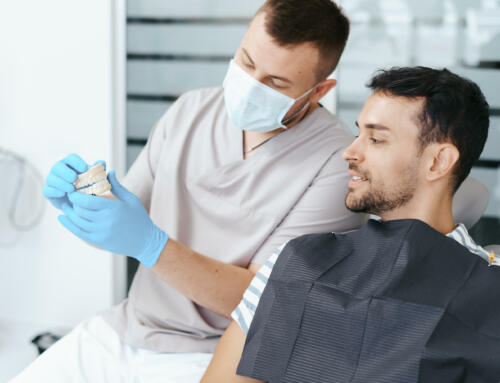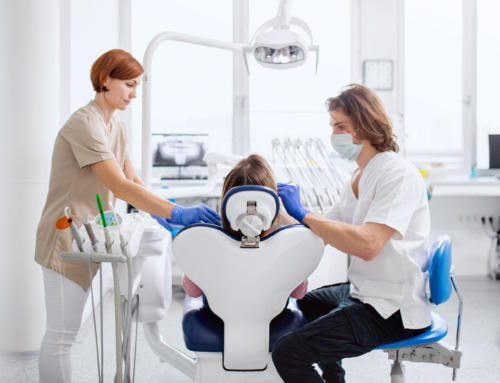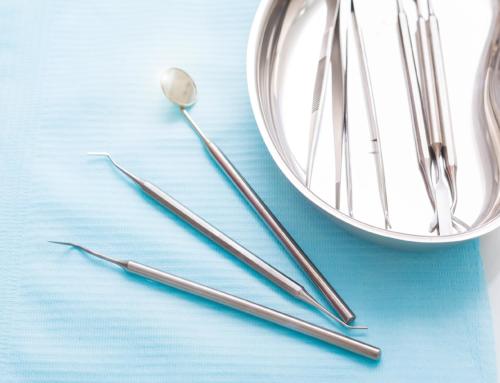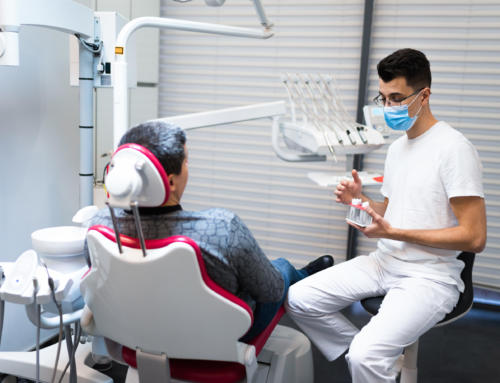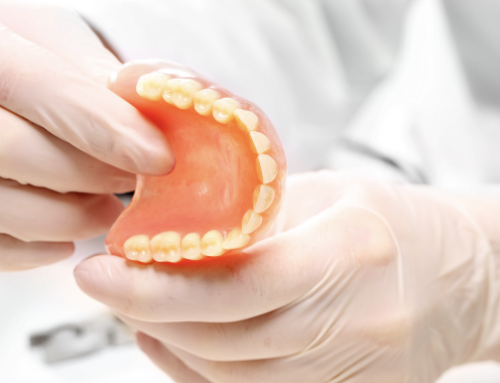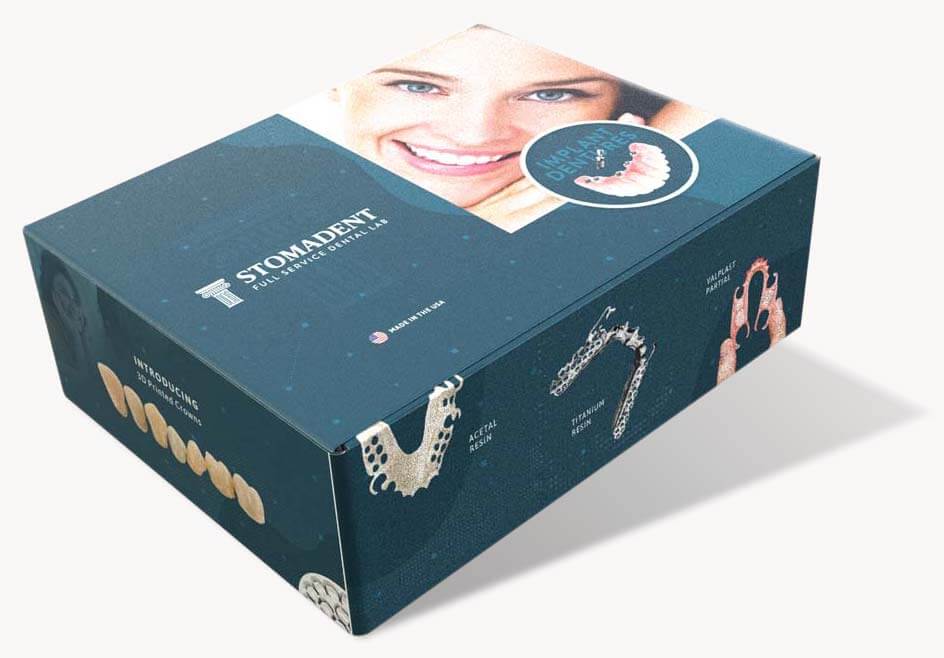
By David Hudnall, DMD
Full mouth rehabilitation cases are complex; they require a tremendous amount of thought and advance planning. Even though you believe that you may have considered all aspects of treatment, there are inherent unknowns that require discussion with the patient as they arise and additional unplanned treatment that can often change the course of the initial treatment plan.
In other words, plan for the unexpected. Let’s discuss the main considerations when preparing to perform a full mouth reconstruction.
Full Mouth Rehabilitation: Vital Steps/Technology
Full mouth restoration and rehabilitation involves much more than just the mechanics of performing dentistry. Let’s break the steps into manageable parts that must easily integrate with one another to produce the desired clinical outcome.
Preliminary Process
The first step with any dental case, whether it is a simple case or full mouth reconstruction, is to get to know the patient as a person, not just a case, ideally in a private area away from treatment. Ask open-ended questions that allow them to reveal what is important to them.
- What about their smile/natural teeth bothers them?
- What are their expectations and motivation for seeking treatment?
- What do they hope the treatment will accomplish?
- If they were completely happy with their smile, how do they believe they would feel?
Listen carefully to their responses. Their facial expressions and body language may speak volumes more than the answers to the questions alone. The goal is to allow the patient to do most of the talking, get the patient to open up about their concerns, build trust, and help them feel understood.
Your assignment is only to listen, picking up on how to best help this patient while also listening carefully for cues that let you know that both you and the patient have the same goals in mind. If you realize that you are not on the same page as one another or their expectations seem unreasonable, make a note of it and figure out how to address it prior to beginning any treatment.
Examination
Once you have an understanding of the patient’s wishes and desires, transition to the treatment area in order to perform a comprehensive exam and obtain the records that will be essential for treatment planning. These include an evaluation of:
- medical and dental history
- intraoral and extraoral tissues
- occlusion and temporomandibular joints
- radiographic imaging
- periodontal health
- disease control
- missing teeth
- condition of existing restorations
- the smile-line and aesthetic parameters
- vertical dimension of occlusion (VOD) to determine if reestablishment will be required
- pre-prosthetic treatment requirements – periodontal treatment, bone grafting, smoking cessation, etc.
After the physical exam has been completed, capture:
- digital impressions of both arches, including the palate
- bite registration
- digital photographs, intraoral and extraoral
- determine the desired shade of the temporary and final restorations
Treatment Planning
Re-appoint the patient to allow yourself adequate time to develop a well-thought-out treatment plan. If smile-design software is available, you may want to utilize it in order to show the patient what their proposed treatment should look like when complete.
It may be helpful to involve your laboratory technician in the planning process. Often, as clinicians, we don’t fully understand the technical aspects and challenges associated with fabrication of restorations, especially those that involve technology to produce. Your laboratory can be a big help with treatment sequencing or recommend treatment alternatives that are proven to obtain the best outcome.
Patient Acceptance
Treatment planning for a full mouth rehabilitation is much like remodeling a house; the patient must have a contingency set aside to address unplanned but essential treatment as it arises. If, for any reason, you and the patient don’t agree on treatment and a realistic outcome, address it before beginning any treatment. It is far better not to engage in any treatment at all if there isn’t mutual trust.
With treatment, the patient accepts responsibility for the success or failure of their treatment by taking charge of homecare and receiving regular maintenance to prevent treatment failure. The dentist cannot be accountable for treatment failure caused by neglect or inadequate time devoted to home care. Full mouth reconstruction cases aren’t just cosmetic dentistry and they depend on having common goals and open, honest communication.
Ask Yourself “Do I Proceed with Treatment?”
These preliminary considerations may seem like a lot of information to gather, but they are critical to establishing a complementary doctor/patient relationship with realistic treatment goals that are achievable. Only after you have adequately prepared and are of like minds with your patient should you proceed to the clinical phase of treatment.
Clinical Process
Depending on case specifics, the approach that you take to treatment will vary widely. It may be necessary to perform preparatory treatment, such as periodontal therapy, extractions, bone grafting, or place full mouth dental implants prior to beginning the restorative phase of full mouth reconstruction.
Since each case is different, let’s speak in general terms and provide a framework of things to consider when restoring an entire arch.
Tooth Preparation
The basic principles hold true. The best aesthetic results require sufficient tooth reduction. Laboratory design software has afforded dentists the opportunity to prepare teeth and implant abutments virtually to ideal dimensions with common paths of insertion in order for the final restorations to be of appropriate thickness without appearing bulky. Take advantage of the ability to pre-plan tooth preparations with 3D printed models that have companion printed tooth reduction guides rather than free-handing crown preps.
CAD/CAM technology will also save time and money when used to produce 3D printed temporary restorations that maintain the correct vertical dimension. By creating provisional crowns in sextants, the dentist can work on one area of each arch at a time without losing site of the vertical stops that must be maintained.
Capturing Impressions
Imagine attempting to take a full-arch impression of multiple crown preparations. Trying to control all of the parameters while ensuring perfect moisture control manually is overwhelming. Use chairside scanning to your advantage by isolating and capturing crown preparations and bite registrations one sextant at a time, stitching together the entire arch as you progress.
Doing so also allows the patient to take a break between segments, making the whole impression procedure much more patient-friendly. After all areas of the arch are captured, cement the provisional crowns. Verify occlusion, the function to allow for eccentric movements and aesthetics.
Laboratory Process
CAD/CAM software is used to fabricate a framework (if necessary). Provisional restorations are removed in order for the framework to be tried into the patient’s mouth for verification. Final zirconia or Feldspathic porcelain restorations, based on the approved design and the occlusal surfaces relationship of the provisional crowns, are fabricated using digital master models stored within the design files.
Procedure Process
Remove temporary crowns. Try in the final crowns based on the preferred sequence determined by the laboratory. Verify marginal adaptation, proximal contacts, occlusion, phonetics, and aesthetics. Make any necessary adjustments accordingly.
Once the final appearance is approved by the patient, follow standard cementation protocols to complete the insertion of the crowns and bridgework. Verify and refine the occlusion as needed in both maximum intercuspation and excursive movements. Reschedule the patient for a follow-up visit one week later to make final refinements to the bite and to discuss any functional limitations that they have encountered.
Tips for Proper Patient Education
Most patients are so excited about their new teeth that they fail to consider maintaining a beautiful smile requires regular maintenance. It’s truly a shame when the patient has spent time and money on a full mouth rehabilitation and lets it all go south with neglect. We’ve all seen it happen. What’s more, many of these patients believe that their treatment was designed to last a lifetime with no oral health intervention on their part at all.
Maintaining a beautiful smile requires patient compliance and a cooperative effort between the patient and the dental professional. Establishing a homecare and recall routine is critical if the patient is to protect their investment. Patients also need to be aware that the condition of their mouth is ever-changing and evolving, necessitating additional procedures and replacement prostheses from time to time.
Effective Full Mouth Rehabilitation Tools
Advanced technology and an integrated digital workflow with your dental laboratory have improved full mouth reconstruction case outcomes while simultaneously eliminating many complex analog procedures from the process. Using CAD/CAM technology to your advantage, including 3D printing and milling, produces provisional and final restorations with improved fit, fewer errors, and more exacting and predictable results.
Still, the one element that can never be automated, minimized, or underestimated is the relationship that develops between patient and clinician. Engaging in treatment with a patient who works with you toward a common goal can be a wonderful experience and produce a lifelong friendship. Equally, a patient who doesn’t understand the process undermines treatment or their relationship with you is a recipe for a terrible outcome, no matter how great the results of the final restoration. Patient selection is key to the success of any full mouth rehabilitation.
Optimal Full Mouth Rehabilitation With Stomadent
Do you recall that part where we discussed having the lab technician involved in the treatment planning phase of your full mouth rehabilitation cases? It’s true. Stomadent technicians often identify important steps that you may have omitted or not considered. That’s why we are in business – to help you be a success.
With your skills and an automated digital dentistry workflow that produces many types of restoration solutions, together we can develop the optimal restorative outcome that any patient would be proud of. To discuss a potential treatment plan or know more about treatment options that you may have not considered, contact the experienced laboratory professionals at Stomadent Dental Lab today!

